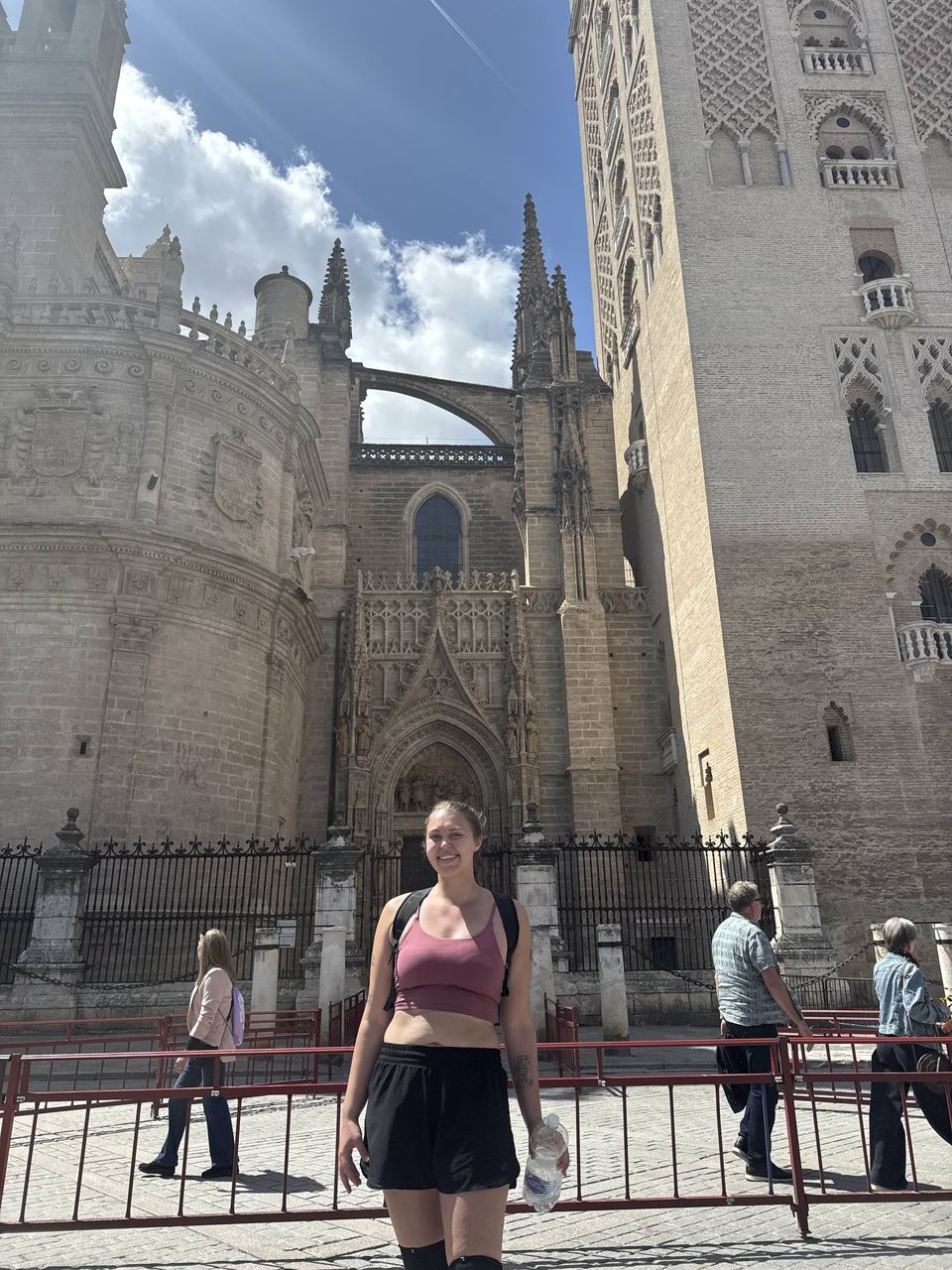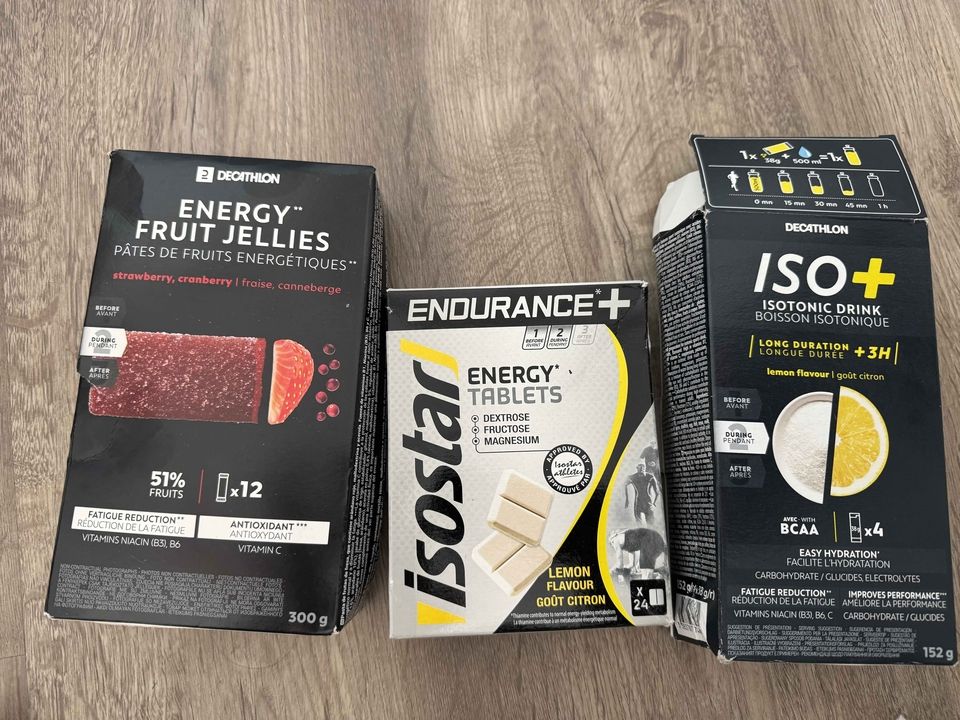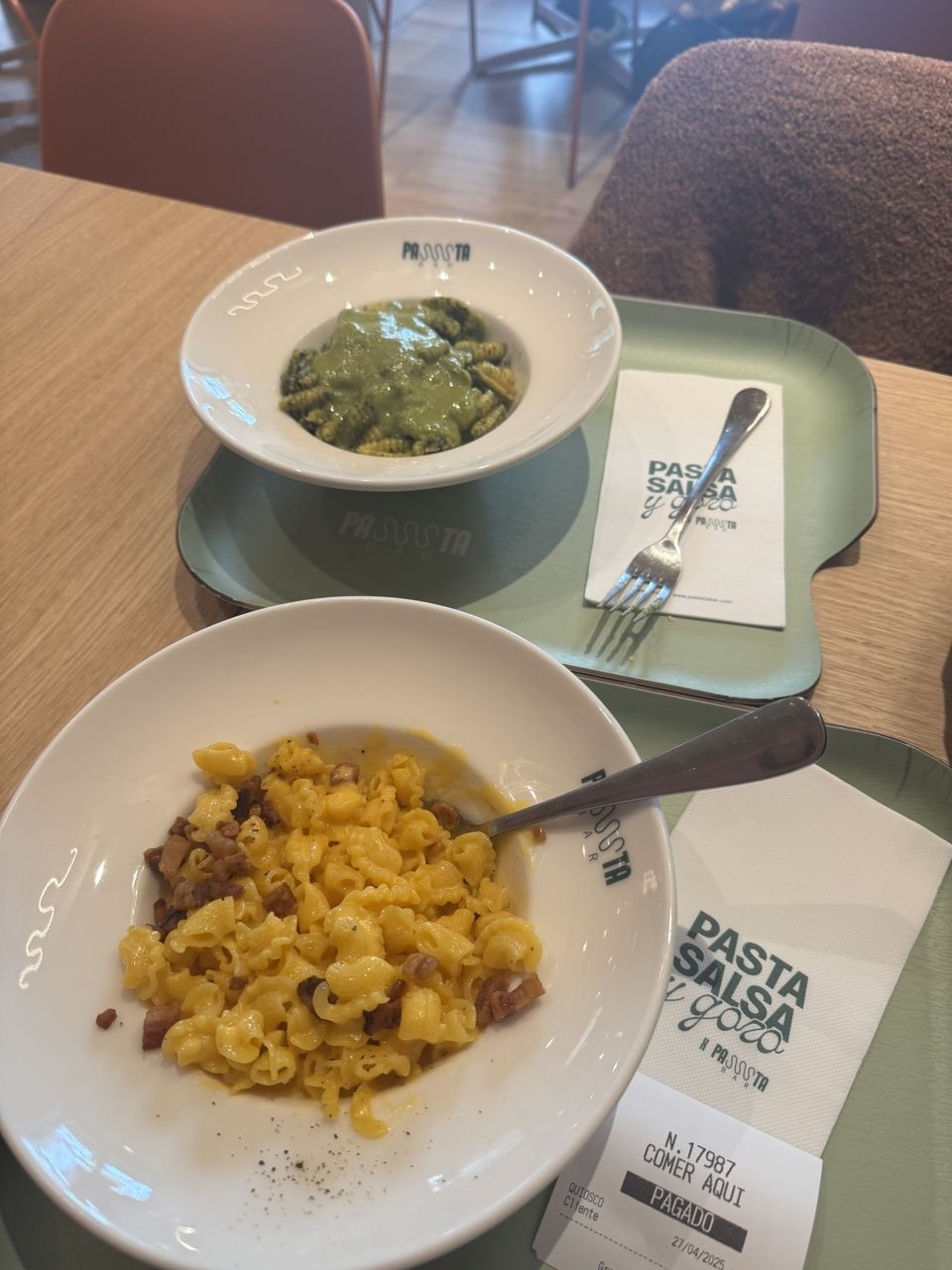Lessons from My First Marathon in Madrid
Running a marathon isn't something I ever thought I'd do. I've never really enjoyed running, and I don't feel like I've ever been particularly good at it. But, I'm always up for a challenge, and it was TRULY a challenge. This is one of the hardest things I've ever done mentally or physically. I did all my training runs by myself. I dealt with knee pain. I got off track with my training plan. And I had some days where I just didn't want to do it anymore. But, I completed the Madrid Marathon this past Sunday, and I am extremely proud of myself for pushing through and finishing it. This was a completely new experience for me, so here I have reflected on some of the things I learned, including goal setting, taking care of my body, balancing training with other parts of life, and the mental strength needed to take on a marathon.
Setting Realistic Goals
In college, I had casually picked up running at various points, but mostly for cardio as a complement to strength training. I had never really focused on running or progressed much with it. In early December 2024, I decided I wanted to really stick to running more. To do that, I knew I needed a goal to reach for because I didn’t particularly enjoy running. Without something to reach for at the end, I figured I was likely to skip out on running when I didn’t feel like doing it, as I always had in the past.
So, I decided to start training for a marathon. Probably not the first logical step most people would take, as I had never run a half marathon, or even a 10K or 5K in an official race. But I have always been an overachiever, and I have a lot more free time right now than I had while I was still in school. I looked up when the Madrid Marathon was and realized I had about 20 weeks, which seemed like enough time for training to me.
Maybe I didn’t start out with the most realistic goal by jumping into a marathon right away, but I did have more realistic goals for my training and the actual race. I have never been a particularly fast runner, and I didn’t expect that to change too much while I was focused on increasing distance. So, my goal from the beginning was to stick to my training plan so I could 1. Finish the race, and 2. Finish it in under 5 hours. A 5 hour marathon is an average of about 11:27 per mile. At the beginning since I was starting from basically zero, I struggled to hold that pace even for a 5K. But I had run faster than that before, so I thought I could get a little faster once I knocked the rust off.
The Importance of Listening to My Body…But Also Pushing My Limits
I ran 212 miles to train for my marathon. I was supposed to do 381 miles according to my training plan. By about week 10 of the 20-week plan I was following, my knees were starting to hurt. I’ve dealt with knee soreness before, but usually in my patellar tendons below the kneecap. This felt like my kneecaps were catching and not moving as fluidly as they’re supposed to. I asked my dad, who also runs and has a history of knee problems, how to know when it’s time to stop running. He said, “When you can tell it is pain and not soreness.”
I wasn’t quite sure if I had crossed the line into pain yet, but I definitely felt like I was on my way if I didn’t slow down. So, I took a few weeks off. Doing this right in the middle of training was not ideal, but I’m not sure my knees would’ve held up for long enough to complete the marathon if I hadn’t taken a break. I missed a lot of long runs, trying to stay in shape while not overdoing it.
Still, I can be quite stubborn once I’ve decided I’m going to commit to something. My final test was a 20 mile run while on a trip to Sevilla, three weeks before race day. I needed to prove to myself that I could complete the longest training run on the plan. Otherwise, I thought it might be time to officially drop out. My knees had been feeling a lot better since I bought compression sleeves for my knees. I successfully completed the training run, surprisingly still at a good pace to finish a full marathon in under five hours.

Balance
Balance is something I have always struggled with, in all areas of my life. I have a habit of doing things 100% or not at all (hence starting my running journey with a marathon). But it gets pretty exhausting to do all things at 100%, all the time. Therefore, one of my overall goals for my time in Spain is to relax and enjoy life a little more.
So let’s be real. I’m in my early 20s living in Spain. This is the first time since kindergarten I haven’t had school to focus on. I’ve met new friends since I moved here. I can easily take weekend trips to new countries. I decided basically from the beginning that I wasn’t going to sacrifice any of that for marathon training.
I didn’t restrict myself from any specific food or completely cut out alcohol. I still went out with my friends. I still traveled on weekends. I did try to eat healthier and cut back on alcohol. I did get some of my runs in before going out. I did try to get my runs for the week in early if I had a trip planned for the weekend. A few times I even did my runs on my trips. And I did miss more than a few runs because I was prioritizing these other things. Could I have run a faster race if I stuck to my training plan religiously? I think so. But I also think I would have enjoyed the experience a lot less.
Fueling While Running

One of the newest parts of this experience for me was learning how to keep my energy up while running such a long distance. From researching online, I found out that a lot of people use energy gels to take in carbohydrates while running. I tried the gels and figured out pretty quickly that I didn’t like them. They’re sticky and I don’t like the consistency. Some of them have to be taken with water to digest properly.
So began my love of my energy gummies. Like the gels, they’re still designed to be easily digestible for use during running. But in my opinion, they’re tastier, easier to open, and easier to consume while running. Unfortunately, the gummies don’t have quite as many carbs in them as the gels, so I did have to take more during my runs.
Some gels and gummies have caffeine in them. I thought about using those for an energy boost, but eventually decided to choose fuel without caffeine to avoid upsetting my stomach. On that note, training my stomach was actually one of the more difficult parts of training for me. And I’m not just talking about side cramps. Yet another reason I stuck with the gummies, as some gels didn’t sit well in my stomach.
For hydration while running, I brought water with me on my longer runs. I also brought an isotonic drink, either a Powerade or my drink mix. Isotonic drinks help replace lost fluids and electrolytes quickly during exercise.
Packing for Race Day
I had two bags with me on race day: one that went in bag check and one that I carried with me during the race. My bag check bag had things I needed or wanted for before and after the race, including: sunscreen, a jacket, a change of clothes, a clean pair of socks, my Birkenstocks, deodorant and perfume, pain reliever, and electrolyte tabs. I did put sunscreen on before starting the race and still managed to worsen my horrendous sock and knee sleeve tans.
I chose to carry a small backpack with me while running. A saw a lot of people wearing running vests or belts to carry things with them. I do have a running belt, but while doing my longer training runs I decided it wouldn’t be big enough to carry all of my fuel with me on race day. I thought about getting a vest, but a lot of them were kind of expensive and we are balling on a budget over here. I also didn’t want to commit to buying expensive gear before deciding if this is something I want to continue with in the future.
In the front pocket of my backpack, I had my gummies and energy tablets. In the big pocket, I had a small Ziploc bag with Tums, toilet paper, Vaseline, BandAids, an extra hair tie, and my headphones. I also had a 1.5 liter bottle of water and a 1 liter bottle of my isotonic drink. This did mean carrying some extra weight with me, but it made me feel better to be overprepared. I did end up needing the Tums, which thankfully helped me avoid needing the toilet paper at one of the portable toilets along the course.
I am also glad I decided to bring my own fluids with me. My backpack lightened up during the race as I hydrated, and I avoided having to rely on crowded aid stations for hydration in the beginning. I did pick up water and Powerade from different aid stations during the second half of the race after the half and full marathon crowds split. The water was in bottles like the race organizers said. The Powerade ended up being in cups. I had done training runs with Powerade, so I knew it would be fine for my stomach. I had not, however, practiced drinking from a cup while running and promptly spilled half the Powerade on myself.
Nothing New on Race Day
This brings me to probably the most important thing I learned. Of all the advice I saw online about running a marathon, this phrase was repeated the most: nothing new on race day. This means no changing your gear, routine, or fuel the day of the marathon. Everything should be practiced before. I think this really speaks to the amount of preparation required to run a marathon. It doesn’t just require doing the training runs, but also figuring out what clothes, shoes, fuel, pace, and so many other things work best for you. I was able to stick to this for the most part. Unfortunately, I can’t control the weather. I trained from the beginning of December until the end of April. Madrid can actually get quite cold, so most of my training runs were in 30 to 50 degree weather with a sweatshirt on. Other than my long training run in Sevilla, I really didn’t have any experience running in warmer weather. When I started on race day, it was about 55 degrees, but by the end it was 65 and sunny and felt A LOT hotter. I think the heat definitely got to me.
The Final 10K
I’m going to be completely honest: I was not at all prepared, physically or mentally, for the final 10K of the marathon. I had read multiple times that mile 20 is when the real race begins, so I knew it would be difficult. But I didn’t know it would be THAT difficult. My knees and hips were completely done by that point. I tried at different points to start running again and couldn’t sustain it. I switched from attempting to meet my time goal to just focusing on finishing. I think this is where not having enough training really got me. I didn’t meet my time goal, instead finishing in 5 hours, 17 minutes, and 19 seconds. BUT: I ran a marathon! I’m still very proud of myself, even though my race didn’t go exactly how I wanted.
Recovery

It is now day 2 of recovery after the marathon. Sunday right after the marathon, I got food with my friends, went home, showered, then went straight to bed. I spent most of Monday in bed resting too, aided by a nationwide power outage in Spain (and Portugal and parts of France) grinding the whole country to a halt. Still not quite sure how that happened. Because power wasn’t restored in parts of Madrid until late Monday night, I didn’t have to work today. I still rested most of the day, but I started moving around more. I’m sore but feel like I’m moving surprisingly well.
As for the future of my running career, I’m not sure when or if I will run my next marathon. My plan at the moment is to switch my focus back to strength training because I enjoy it more and because my legs need a break. I still plan to get back to running, but in shorter distances. I’m going to focus on strengthening my legs more with the goal of bulletproofing my knees for more distance running in the future.
Bonus: Marathon Vlog
Related Posts
Explore the World on Your Terms: A Guide to Renting a Car Abroad
Discover the freedom of exploring a new country by car! Learn how to rent a car abroad and drive legally with an International Driving Permit (IDP). This step-by-step guide covers everything from eligibility and where to apply, to essential driving tips—making your next travel adventure stress-free and unforgettable.
The Ultimate Café Guide to Madrid
Looking for the best coffee shops in Madrid? This guide covers top spots for specialty coffee, matcha, delicious brunch, and cozy vibes—perfect for anyone craving quality drinks and Instagram-worthy interiors. Whether you're a local or visiting, these must-visit cafés offer the ultimate Madrid coffee experience.
Not Just for Business: Why Your Trip Needs a Mission Statement
If you're seeking deeper meaning and fulfillment in your travels, creating a personal travel mission statement can help guide your journeys with purpose. By aligning your trips with your values, goals, and vision for growth, you transform travel from simply visiting places into a powerful experience of connection, learning, and inspiration.
